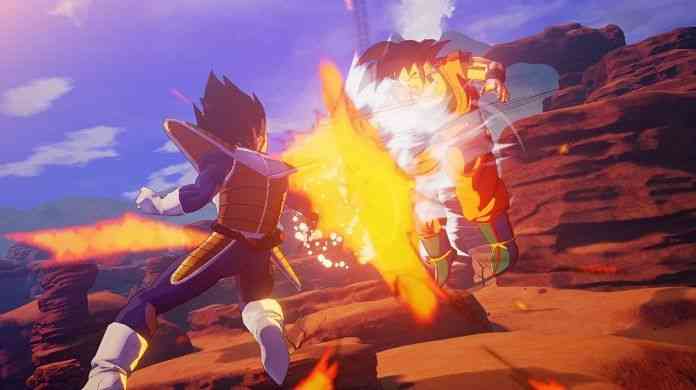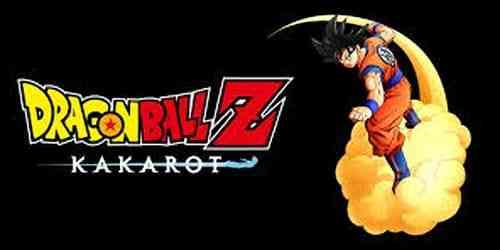Dragon Ball Z: Kakarot Review
Despite not having seen or watched more than a random episode or two over the last ten plus years I remain steadfast in my affection for the Dragon Ball Z series. Of course, while I still love the anime, I’d be the first to admit that I don’t remember many details other than some really big moments and overall storyline. As such, I was more than a little eager to jump back into the anime series that I loved so much as a youngster. And though it might not be a perfect addition to the constantly expanding DBZ game collection, Dragon Ball Z: Kakarot is certainly a nice little homage to the franchise.
Click the start button and be transferred into a world of the seven dragon balls and this epic story of Gohan, Goku and friends, in their battle to save their beloved planet Earth. And there’s no shortage of enemies that want to blast every living being on the planet to smithereens. Remember Raditz, Cell, Frieza and Buu? Lucky for us, in Kakarot they all have a very important role.
If you were looking to this game for a strong and immersive experience that mirrors the anime itself, you won’t be disappointed because yes, the storyline sticks very, very closely to the anime. And while it’s a condensed version of it, where you won’t find yourself locked in battle for multiple ‘episodes’, there’s still plenty of game to get lost in. If you’re a fan of DBZ, no surprise here, you’ll play through four main story arcs, facing off against the Saiyans, Cell, Frieza, and Buu. If you’ve played any DBZ game previously you’re certainly not going to be awestruck by what’s being offered here as CyberConnect2 isn’t exactly reinventing the wheel.
Flying Nimbus!
That said, you’ll get to play as multiple characters, including Goku, Vegeta, Piccilo, and Gohan, which is certainly better than playing as the same protagonist the entire time. And the witty banter of each and every one of them is more than enough to bring a smile to your face because their personalities are all unique and totally larger than life. There’s also a bit of stuff to get lost in aside from the main storyline. There are side quests to jump into, Z orbs to collect, a world to fly around in between main storyline missions, airways to zoom through, and a bunch of random NPCs to strike up a conversation with. Oh, and don’t even get me started on the fishing! In fact, the game takes roughly 40 hours to complete the main storyline alone, and double that (or more even) if you like to explore and play the side quests available.

Unfortunately, for as immersive as the storyline is, the world itself just isn’t as alive as the fans deserve from this semi open world action RPG and sometimes the walking and overall camera angles are stiff. I continuously found myself walking into a building or going in a direction that just wasn’t meant to be explored, only to find my way blocked by an invisible barrier. Or maybe I wasn’t quite done in an area and suddenly the camera is looking onward instead of something at Gohan’s feet. Even though Kakarot offers a little more freedom than some previous DBZ games, we’re looking at you Xenoverse, and a whole lot more freedom over an arena fighter like Dragon Ball FighterZ, it remains relatively linear throughout its entirety. If you stick with the main storyline and want to rehash the beloved anime, no worries here, but if you’re anything like me, yearning to find every hidden secret within, you’ll become frustrated that the game just wasn’t necessarily designed with the explorers in mind.
Where the exploration is rewarded however, is when it comes to character building. The more Z Orbs you discover, the more XP you earn from side quests, and the more D medals you collect, the stronger you can build your various protagonists. Z Orbs are used to unlock and level up new super attack abilities, while D medals can be used to train in order to unlock new skills within the character skill tree. Both are important when you’re looking to bring a beating down on one of the main bad guys of the story. Because you’ll certainly need all the help you can get. Because let’s face it, the big bads in this game are some of the most powerful in the entire DBZ universe and without any kind of adjustable difficulty meter, you’d better be prepared to lose more than a few times.
Kicking Butt and Taking Names
And speaking of beat downs, the combat system takes some cues from the Dragon Ball Xenoverse series, despite being simplified a bit. You’ll still take great satisfaction when you end the match without taking a single hit, using Ki blasts, punches, and a good ol’ Kamehameha to top it all off. In some instances of this asskickery, in order to move the storyline along in a manner consistent with the anime, the reactions from the enemies make it sound as if I was huddled in a corner somewhere crying after a relentless beat down. Of course, it makes sense to lose for the sake of the story, but it takes away from the immersion the rest of the game tries so hard to build up. Here it almost seems like they could have taken the story we all know and love and turned it into something a little different. Instead of fighting Raditz for example, we could have fought as Raditz, which would have made more sense with the dialogue following the fight.
The weird and the glitchy don’t end there. I’ve found multiple bugs throughout that could totally use a patch or two. Things like side quests not loading if an enemy attacks, or random storyline interactions acting up. Instead of hearing the characters say what’s written in the speech bubbles they would often make unintelligible grunts and saying different versions of hi or yeah. Small issues maybe, but things that break down the immersion CyberConnect2 tries to maintain throughout Kakarot’s entirety.

Where Kakarot really shines is in its graphics and overall sound design. From the opening scene every little detail and pixel is picture perfect, as if it were the anime playing out before your very eyes. After big, exhausting fights, the characters show signs of wear and tear, and the colors pop left, right, and center. If someone was to glance at your screen they would be none the wiser that you were playing a game instead of watching an episode of Dragon Ball Z. And of course, it’s not all the graphics that give off this genuine animation feel. The voice acting, minus the aforementioned glitch, is superb and the musical score and soundtrack are perfectly nostalgia-inducing.
While Dragon Ball Z: Kakarot does a lot of things right, there are still some glaring issues that could’ve used some polish before release. Though some of these can be resolved with a simple game patch, others, like those that break the immersion, are downright disappointing. And sure, it doesn’t exactly reinvent the series, and for fans that have seen this story unfold time and time again, Kakarot might not be worth getting super stoked about, but it’s still some damn good fun. Plus, there isn’t a weird hub to get confused about like in the Xenoverse games. All in all Dragon Ball Z: Kakarot is an engaging and immersive experience that transports the fans back to the very beginning and for me, that came with a heavy serving of nostalgia.
*** PS4 code provided by the publisher ***
The Good
- Graphics & voice acting are amazing
- Storyline pays homage to the DBZ series
- Lots of game to play
The Bad
- Doesn’t maintain immersion
- Not reinventing the DBZ wheel
- Random bugs & glitches

